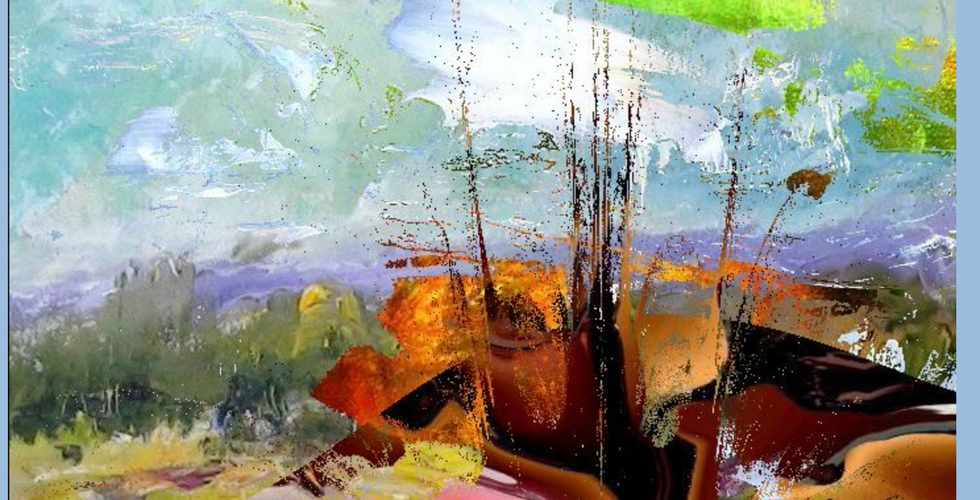Module DM7917

How is computer art seen? How is it valued? Its a new disposable form so has no value?
Interesting questions to ask as a digital practice student... creation of original digital content can take as long as a painting, or sculpture; planning, practice, skills, education, opportunity all play a part in the digitised art we are exposed to.
When does art become worthy? Banksy donates his work to charities to sell, robbing the rich to give to the poor, a regular Robin Hood story... but his notiarity is based on appropriation of street art to poke fun at the establishment, and to question the worthless of the art itself and the gallery too. See below:
Girl with balloon, sold at the action house and the frame instantly shredded it... does it become worthless - not entirely so. But the whole stunt does call into question about value worth and ownership.
Authenticity of the work matters to its value, I have researched an artist who create works from autogeneration: http://www.soban-art.com Bogdan is a revolutionary artist whose art is entirely computer generated and based exclusively on the aesthetic ability of mathematics and generative designed software. His geometric abstractions are magical creations of color and design that represent his emotions during the creative process.
[Gallery Direct, entire website and associated software Copyright 2004-2016 Dave Yelen - All Rights Reserved]
If a computer is responsible for the output, the author is still the programmer, the human hand in the process seems to determine value, the artists name determines worth. (See my blog post Module DM7917 Week 5 - about NFTs)
Combined items to form expressions of art...
In the art world the notion of combined items is sometimes looked down upon as a lesser art form, some big names in art history have had their art forms taken seriously: Milton Ernest "Robert" Rauschenberg (October 22, 1925 – May 12, 2008) the an American painter and graphic artist whose early works anticipated the Pop art movement. Rauschenberg is well known for his Combines (1954–1964), a group of artworks which incorporated everyday objects as art materials and which blurred the distinctions between painting and sculpture. Rauschenberg was both a painter and a sculptor, but he also worked with photography, printmaking, paper-making and performance. (Information from the TATE.org ). He was able to allow his work to flourish as he was a pioneer of his time along with other artists who we now reflect on to be leaders of their time.
I have been using the combination creative method for my journal throughout the project, the act of selecting random stones and pebbles I feel has links to automatic choices and placing of objects in juxtaposition. My work below:
One question I wish to ask in this assignment was : what does art do?
From the artists point of view it is a need to express themselves in forms that they find meaning in. The appreciation of art, comes from the spark of interest or the calling of a picture, sculpture made item, that gives pleasure tot he viewer.
Pleasure in viewing art particularly at in the 19 century was dominated by the male gaze and the subconscious mind - Freudian notions of sexual desire for the female form or for images of war, angels and demons. the pleasure in our human condition I think boils down to choice.
Emptying our mind, walking along a beach eradicates other thoughts. The space and texture of the beach itself becomes important, in lockdown I really wanted to travel to the sea to feel that sense of space. The sea is not for everyone but picking a flower, a leaf from the forest floor, or a stick to throw into the stream, have the same motivation, selection of the item we find extraordinary - art allows us this choice to stop and ponder.












Comments